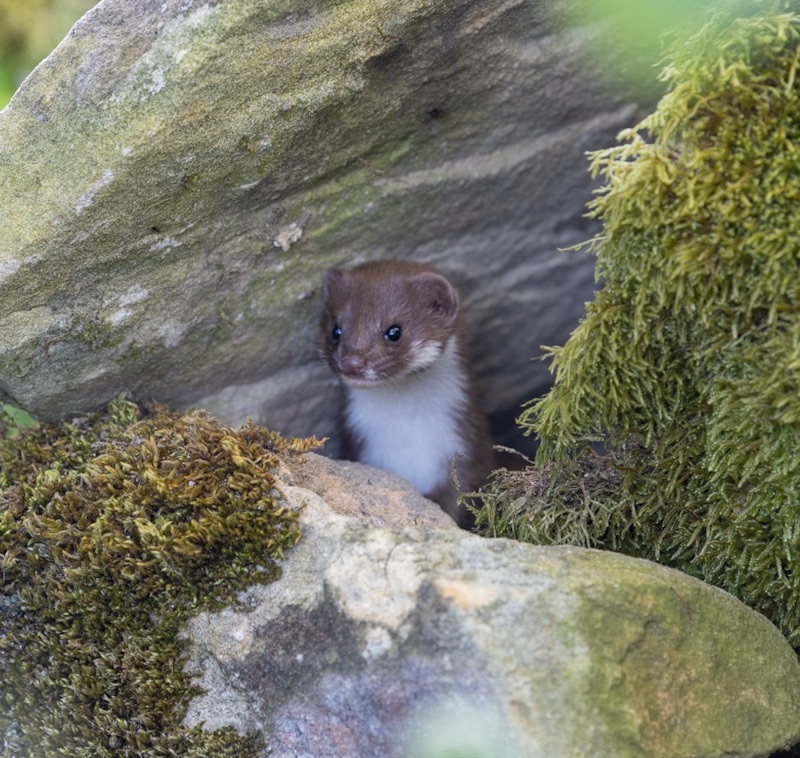This was a day of transition for Gary and I, as we started in the rampart building, before finding a new home on the opposite side of the trench after lunch.
First, I need to demolish one hypothesis from yesterday: the idea our wall was built as a retainer for the rampart. As we got started for the day Andy pointed out the telltale signs of a filled in hole within it, where the stones in multiple courses are butted up to each other rather than being bonded properly via a staggered arrangement (below). This must almost certainly have originally been a door – something that would not be there if its function was simply to support the rampart – because there was also a likely threshold stone still in place.

Thankfully, the midges were nowhere to be seen today, so we could focus completely on following our jumble of stones further on each side of the wall’s end. It seems a shame to compress more than two hours of work into one sentence, but by noon it was clear the wall had truly petered out. As I explored further east it became clear there was no organization to all the new stones I uncovered (yellow area below); Gary had more luck going westward, finding many closely packed small stones that clearly formed the edge of the intervallum road (blue).
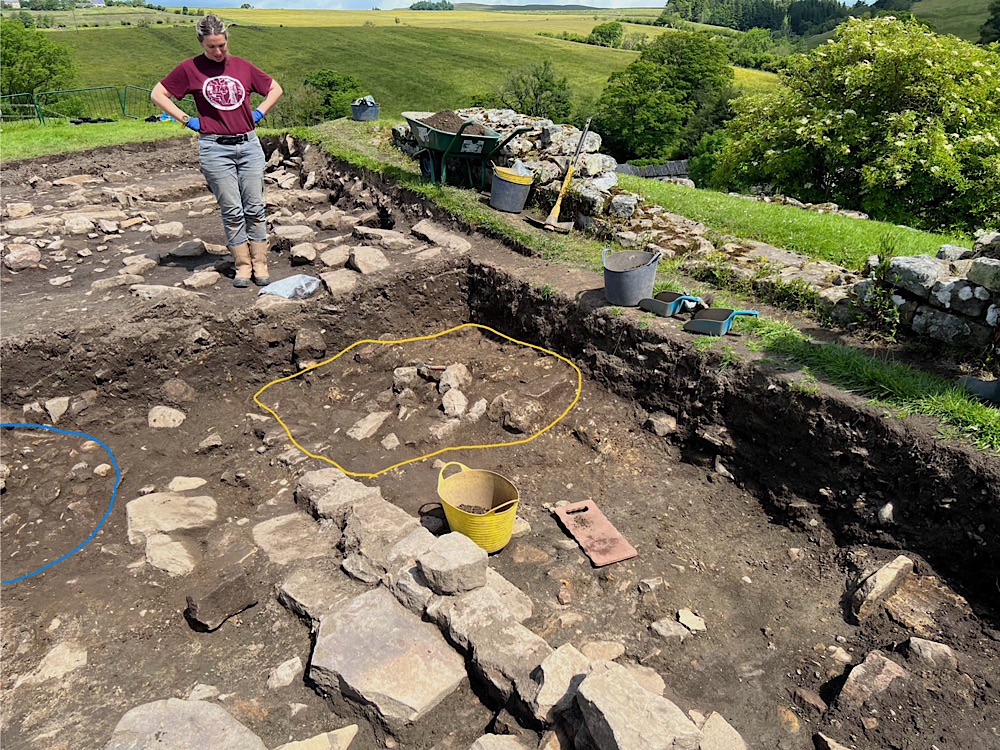
After lunch we were moved about 30m west, into a likely 4th C building that early indications suggest had a commercial function, with some very well-worn flagstones in the floor and an entry directly onto the street.
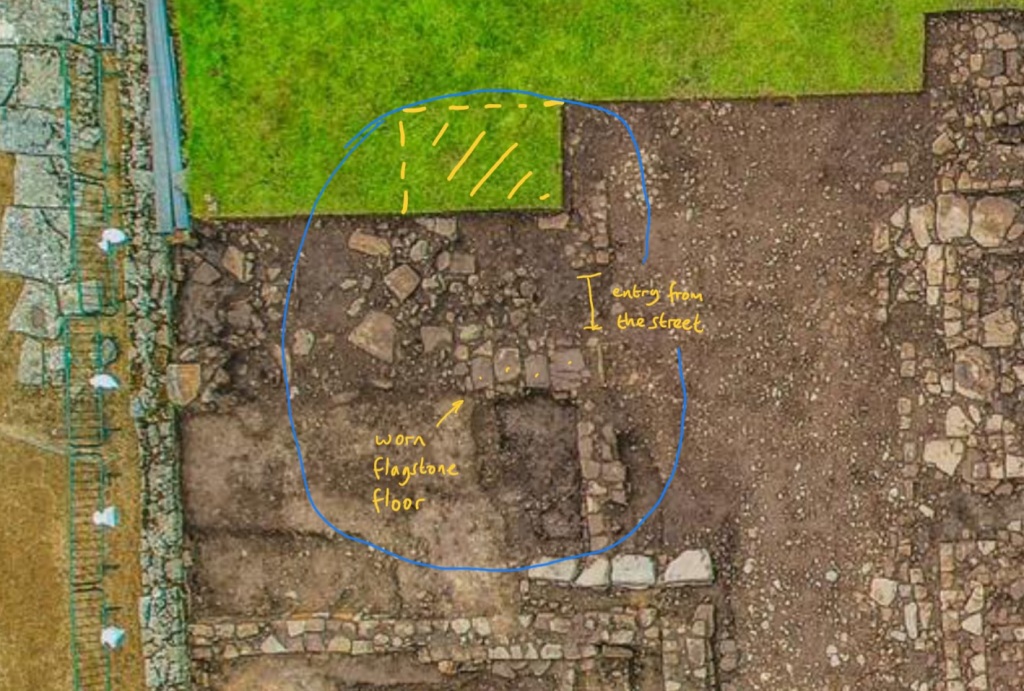
By day’s end we had deturfed a four by three meter area that Andy hoped might encompass much of the rest of this building, cleared all remaining ploughed topsoil and began troweling into the building. Finds were scarce – a single sherd of mortarium rim for me – but Gary logged a very corroded iron blade from a knife or chisel. However – emphasizing yet again the palimpsest nature of the site – I managed to reveal four facing stones from the 3rd C barrack on which the later building sat, marked in the image below (the 4th C wall was assumed to be laid on top of it, on almost the same alignment, based on the stones uncovered on the other side of the entry way).
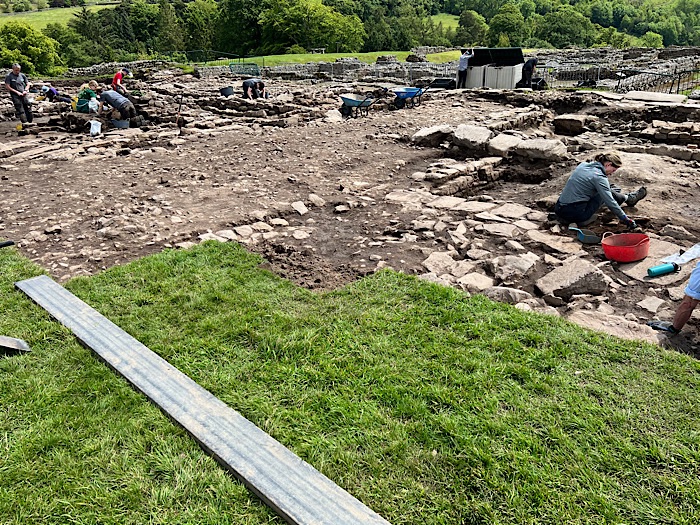
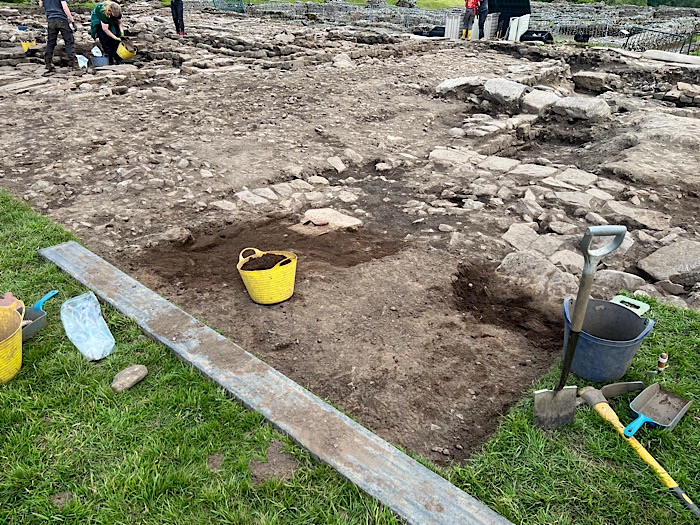
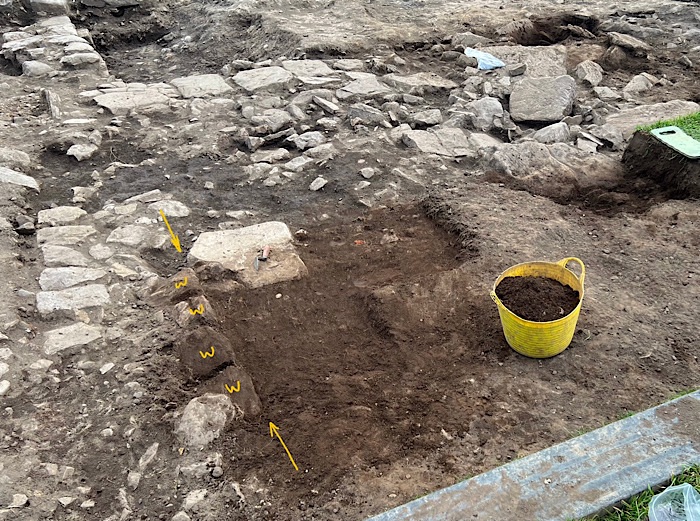
A beautiful walk in the glorious evening sun yielded two more delightful small finds: a family of stoats (or weasels, hard to tell without seeing their tail) in a stone wall, and a deer with two fawns. Reminders of why I love to come to this part of the world; it’s not just the archaeology.
